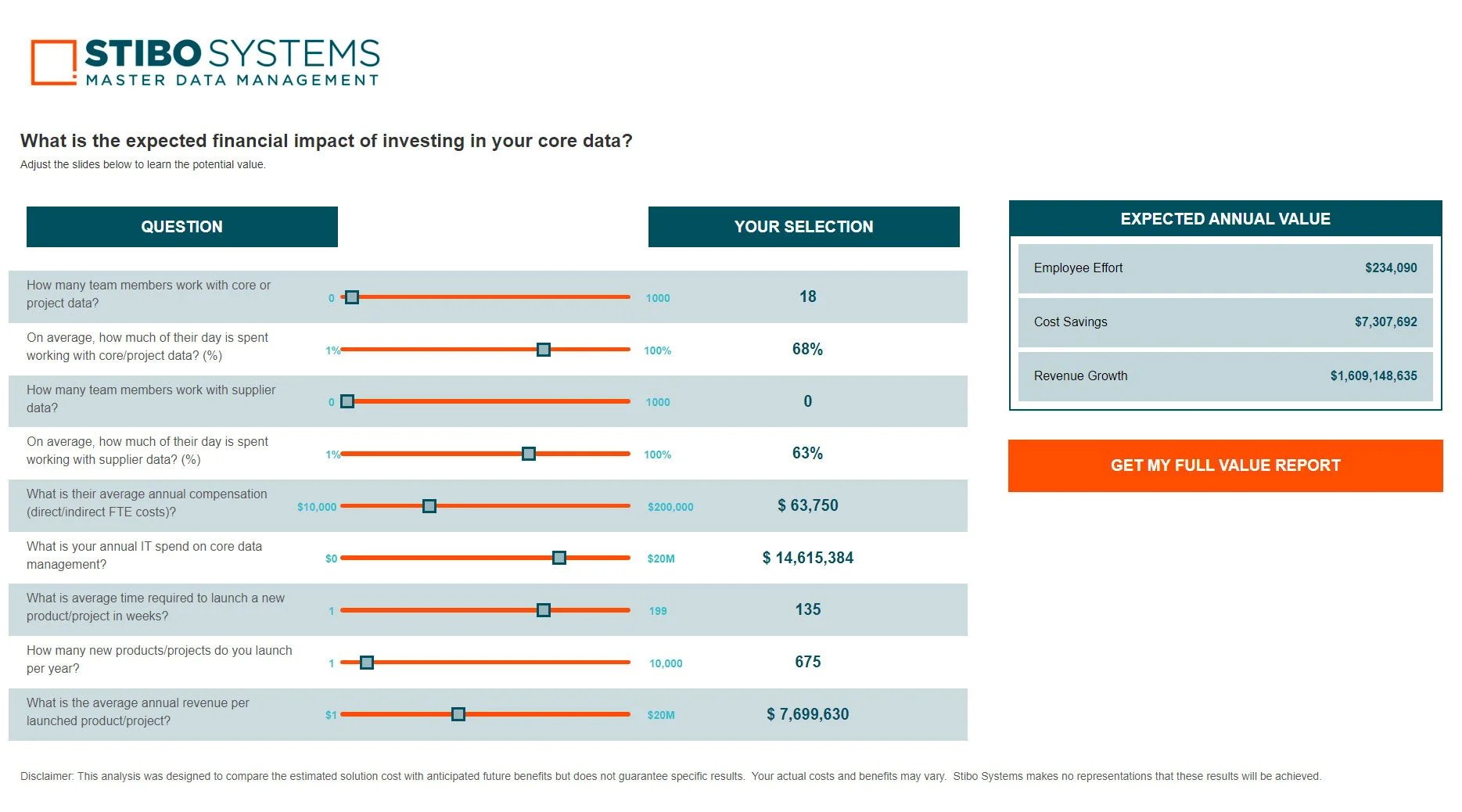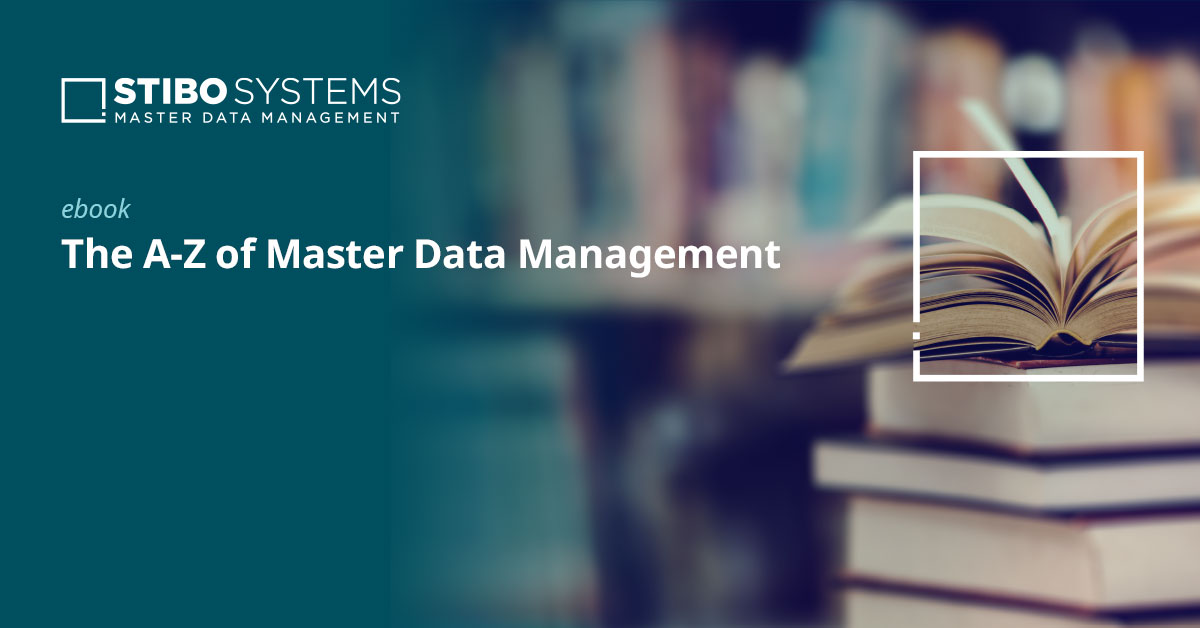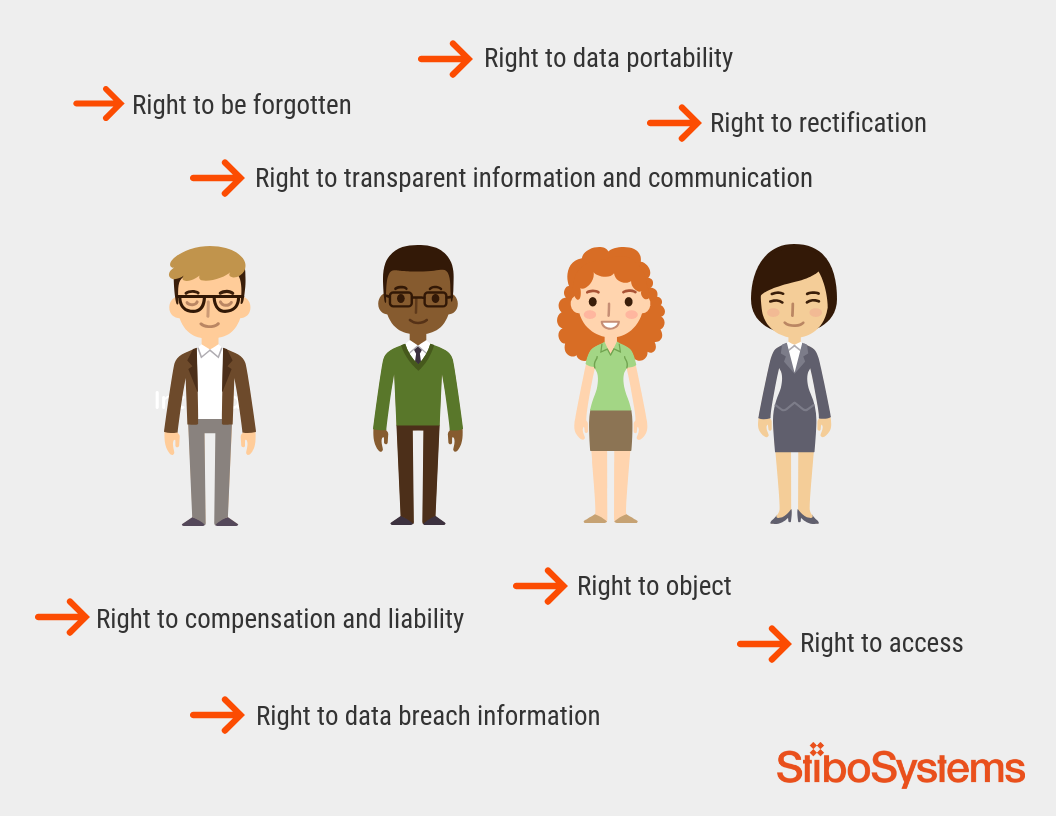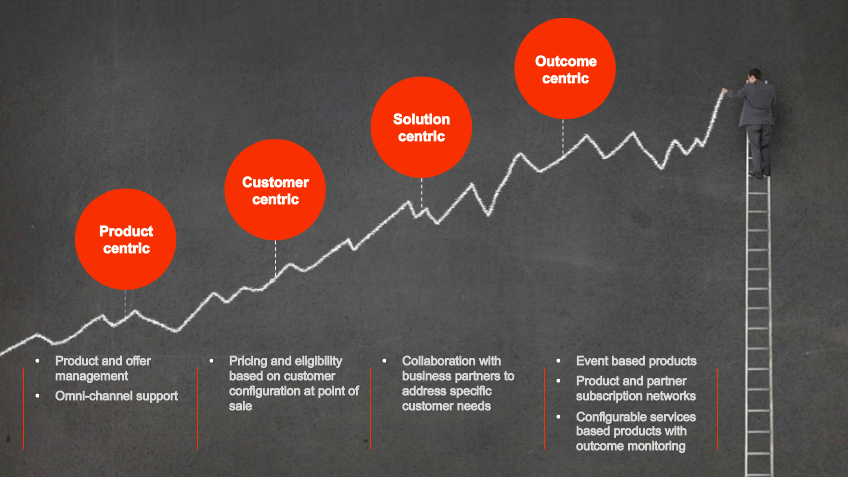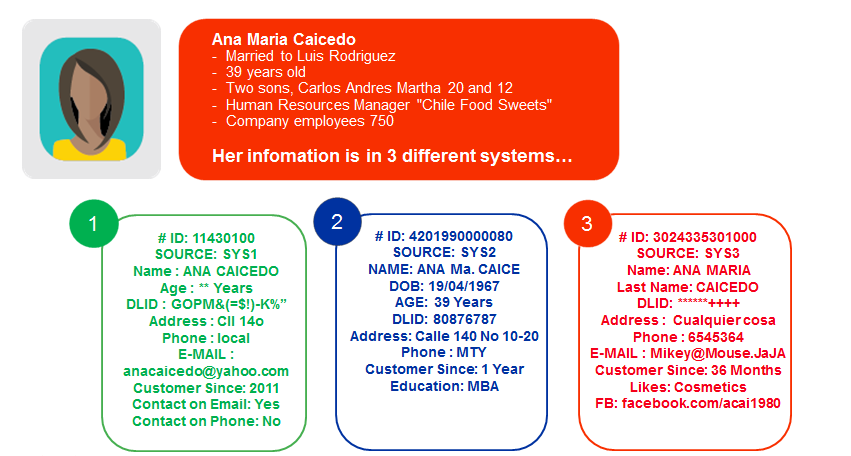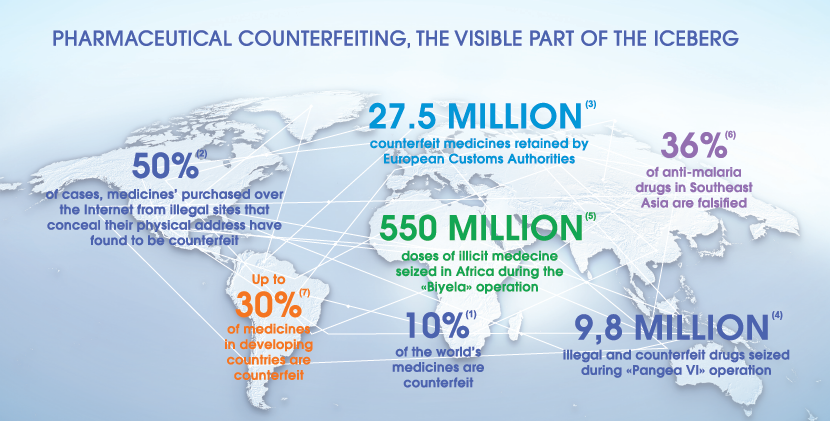In the global marketplace, where data is a critical business asset, industry leaders struggle to maximize back-end IT, including CRM, ERP, e-commerce, marketing automation, and point of sale. Organizations deploy these IT systems to meet customer expectations, differentiate on digital experiences, streamline operations and achieve regulatory compliance while still delivering growth strategies and competing, in many cases, in a global market.
The challenge facing companies is how to get the most out of back-end systems, which often operate in silos and result in impartial or duplicate data that is low quality and costly. In fact, the cost of inadequately performing enterprise systems is significant, with the Harvard Business Review reporting that poor-quality data in the U.S. alone cost businesses $3.1 trillion annually.
One of the most significant steps you can take to improve your existing systems without having to rip and replace legacy systems or multiple instances of ERP and CRM is to centralize, organize, localize, synchronize and enrich common data – or master data. By improving the master data that feeds these systems, you dramatically improve their value without having to spend significant time and resources in building a new infrastructure. You effectively ensure better business outcomes for product planning and launch, marketing, sales, operations and other functions—all while using your existing investments.
Many businesses around the world today are turning to master data management solutions to meet these needs because they provide authoritative data and eliminate inefficiencies caused by data silos. Master data management solutions improve data quality, reduce costs and, most importantly, should take a business-first approach to enhance downstream initiatives, meaning the data specifically improves business outcomes.

Deliver business value enterprise-wide
You can leverage master data management for all product, customer, life cycle and other master data, supplying a single version of the truth for all of your systems. What separates cutting-edge master data management platforms from the competition is that it provides a significant business value for an organization by helping teams work with speed and insight to enhance customer and product on-boarding, product design and planning, operational oversight, supply-chain management and more. Master data management acts as the digital business core that fuels strategic initiatives and operations, including digital transformation programs, customer 360 initiatives, loyalty programs, mission-critical enterprise applications (e.g., CRM, ERP and e-commerce) and more.
6 benefits from improving existing systems using master data management:
1. Increase sales and marketing
Master data management fuels marketing and sales by giving organizations a precise data foundation for segmentation and personalization. It takes customer data from several sources and creates an accurate and up-to-date record to use across the CRM, customer service, marketing automation and other systems. In addition, it enriches data from third-party sources, including Loqate, Dun & Bradstreet and Experian. The data includes details such as customer address and organizational size, revenue and industry. You know more about your customers (whether an individual or company) to boost customer retention, increase customer lifetime value, as well as amplify cross-sell and upsell opportunities. For instance, sales reps can use a complete customer record for sales calls as well as glean greater understanding of businesses within their territory for planning purposes. Businesses that take advantage of AI and machine learning can use the best possible customer data to predict future purchases, provide hyper-personalized content and much more.
2. Deliver exceptional customer experiences
According to an article from CRM provider SuperOffice, which cites a study from the Walker consulting firm, customer experience will overtake price and product as the most critical brand differentiator by 2020. The key to delivering great experiences involves using a complete, reliable view of customers to supply real-time, customer-centric targeting and omnichannel experiences. A master data management solution deduplicates customer records to avoid personalization mistakes so that you offer the right person the right product, service or discount at the right time. You avoid using incorrect data that might treat a prospect like a customer or send offers to the wrong address or email. For marketing, users can perform customer segmentation and analysis that looks at value, behavior and sentiment to deliver more targeted, multichannel campaigns faster as well as unique one-to-one experiences. In addition, they can turn anonymous website traffic into customer contacts. Customer service departments can leverage a customer contact to answer questions and service calls.
3. Launch new products faster
Businesses can optimize product design and go-to-marketing strategies by on-boarding, cleansing and enriching product and customer information that provides market insight. They can establish product deadlines, manage order changes in seconds, tailor product availability for international versions of the website and more. Manufacturers, engineers and suppliers receive accurate updates on product detail changes. Everyone, from shipping to receiving, has real-time access to product specifications.
4. Optimize the supply chain
You can improve supplier processes using a 360° view of related customer, product, inventory and other information. Suppliers can easily input information into the self-service master data management, which supports the creation of large numbers of products directly within the web interface or via Microsoft Excel Smartsheets. Suppliers are guided through each stage of the on-boarding process and will receive alerts if data is missing or requires changes. You give your suppliers what they need to share information while developing a deeper understanding of them, their corporate hierarchy and the products they provide. In addition, cleansing and enriching supplier data helps facilitate the creation of an improved customer record for use throughout the organization.
5. Meet regulatory requirements
You can achieve regulatory compliance to meet industry mandates using master data. This avoids fines and penalties as well as lowers operational costs by ensuring that each department and business unit in your enterprise has the most up-to-date and accurate information about your customers. Master data management helps comply with the General Data Protection Regulation (GDPR) compliance, which mandates that companies delete personal data upon request or provide personal data if customers ask for it. In addition, personal data now includes general details as well as possible items like photographs and social media content. Because customer, location and other information are accessed, deleted or edited from a single point, it’s easier to meet GDPR and other requirements with master data management. This helps with identity resolution (is the customer real), consent management (what have they consented to), data governance and identifying and document processing purposes.
6. Improve data management and governance
Better data ultimately fuels all these business drivers and benefits. Master data management provides advanced data hygiene and data profiling, including data deduplication for volumes of complex data regardless of language, duplication levels, omissions or errors. You can match, improve, cleanse, stage and secure your data and then seamlessly manage it across the enterprise. You can do this with leading master data management solutions, such as Stibo Systems’, which includes features to implement data governance policies and processes including audit trails, approval processes with integrated workflows and business rules and version control that enables governance to master data of all domains.
Building world-class governance requires a new level of data-quality policies that enable data stewards to proactively monitor, control and maintain customer data using master data management. In addition, the solution should be aware of what quality data looks like and enable users to sustain data-quality levels according to business expectations. It’s through governance and enforcement of policies that master data management makes its mark, because it ensures business process integrity and drives positive business outcomes.
Moreover, world-class master data management gives you the opportunity to enhance your data lakes or any other method that’s used to gather big data and apply business intelligence tools for analytics and reporting. Citing Gartner analysts, a Forbes article reported that approximately 80 percent of today’s data is unstructured in the form of emails, chats, audio and video. With a single, trusted 360° view of a customer, you have everything you need to extract insight from large quantities of unstructured data from a myriad of sources and formats.
A scalable, seamless solution
What makes improving existing systems possible using best-in-class master data management, such as the solution from Stibo Systems, is its seamless integration and scalable platform. Specifically, IT leaders can take advantage of the multidomain master data management capabilities, with a suite of solutions that make it easy to expand from one domain - such as customer or product life cycle - to other data domains.
IT departments don’t have to worry about problems with paradigm mismatch, which is commonly found when trying to integrate multiple disparate systems. They can achieve faster time-to-value by deploying master data-related projects within the systems, making data and infrastructure reliable, less expensive and more efficient. With rich master data management functions, strong data modeling and powerful workflows, organizations can build and maintain a robust, authoritative information supply chain.
Ultimately, master data management compliments and extends resources by:
- Eliminating silos of single-domain master data
- Improving collaboration between business teams and partners
- Leveraging a seamless, scalable platform
- Maintaining control, flexibility and configurability
- Benefiting from on-premises installation and managed services
Your systems, improved with a reliable data foundation
Business success and digital transformation are as entwined as ever. For companies seeking a competitive edge in the global marketplace, optimizing back-end systems using master data and master data management is the intelligent choice. You remove silos, integrate people and processes, deduplicate records and extract a single, authoritative view that feeds downstream initiatives. With multidomain capabilities and master data for products, customers, suppliers, stores/locations, employees, digital assets and more, you gain a reliable data foundation that improves decision-making and delivers value to the organization and its customers.

